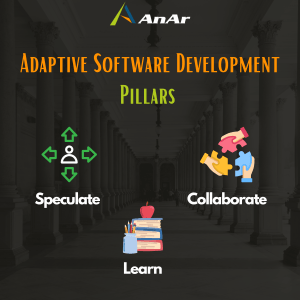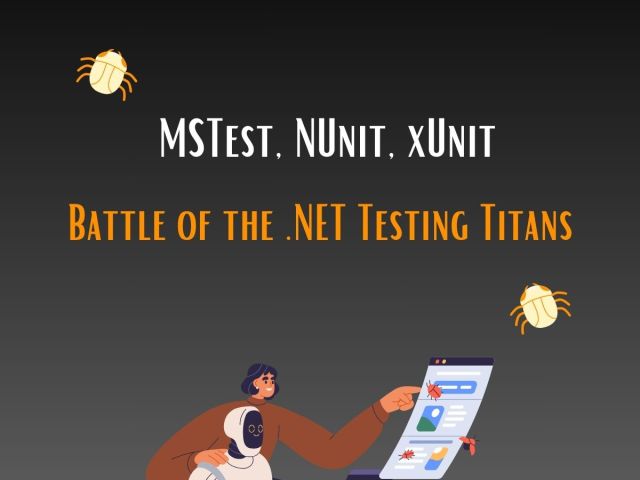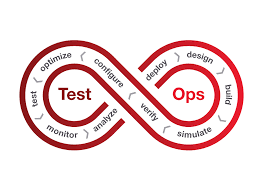The software development landscape is evolving faster than ever before. User expectations shift rapidly, and market trends can change overnight. Traditional development methodologies, often reliant on rigid plans and lengthy timelines, struggle to keep pace with this dynamic environment. Projects built on these methods can become bogged down, missing deadlines and failing to deliver products that truly resonate with users.
However, there’s a new wave of development methodologies designed to thrive in this ever-changing landscape of Agile frameworks. Among these, Adaptive Software Development (ASD) stands out for its exceptional ability to navigate uncertainty and adapt to constant flux. ASD empowers development teams to embrace change, continuously learn, and course correct as needed. This boosts an environment of agility, allowing projects to deliver high-quality software that meets the evolving needs of users and the market.

The Origins of Adaptability: A Brief History of Adaptive Software Development (ASD)
Adaptive Software Development (ASD) emerged in the early 1990s. Project managers John Highsmith and Sam Bayer sought a more adaptable approach to complex software projects compared to traditional methodologies.
Inspired by Rapid Application Development (RAD), ASD focused on shorter iterations (typically one week) for quicker adjustments and continuous learning. Highsmith’s 2000 book solidified ASD’s core principles, emphasizing user feedback, collaboration, and “emergence” (unforeseen positive outcomes). While not as widely used as some Agile frameworks, ASD remains a valuable tool for complex projects requiring a balance between flexibility and structure.
What is Adaptive Software Development?
Adapting to Change is the Name of the Game
ASD is an Agile framework specifically designed to address the challenges posed by complex software projects. At its core lies the principle of continuous adaptation. Unlike traditional methods that cling to static plans, ASD embraces the reality of changing requirements and market trends. This allows development teams to be flexible, responsive, and ultimately deliver high-quality software that stays relevant in a dynamic environment.
The Three Pillars of ASD: Speculate, Collaborate, Learn
ASD achieves its adaptability through a unique three-phase lifecycle:
- Speculate: ASD ditches the term “plan” and instead uses “speculate” for the first phase. This acknowledges the inherent uncertainty in complex projects. The speculation phase focuses on defining the project mission and setting goals for the upcoming development cycle, but it also creates space for exploration and experimentation. This openness allows for innovative solutions to emerge as the project progresses.
- Collaborate: Building complex applications requires a diverse range of knowledge and expertise. ASD promotes a collaborative environment in this phase. Team members are encouraged to share ideas, solve problems collectively, and leverage each other’s strengths. This collaborative spirit ensures all perspectives are considered, leading to well-rounded solutions.
- Learn: Continuous learning is essential in ASD. The “Learn” phase concludes each iteration, allowing the team to reflect, analyze user feedback, and identify areas for improvement. This rapid learning cycle enables quick course correction through:
Project Retrospectives: At the end of each iteration, the team reflects on the development process and analyzes user feedback to identify improvement areas.
Assessing Assumptions: The team and users evaluate initial assumptions during each learning phase to determine necessary adjustments.
Course Correction: Based on these assessments, the team updates the direction for the next iteration. Short iterations ensure quick application of learnings, reducing the impact of mistakes.
What distinguishes Adaptive Software Development (ASD)?
While ASD shares common ground with other Agile methodologies like Scrum and Kanban, it stands out in several keyways. Scrum, for instance, focuses on delivering work in fixed-length iterations called sprints, usually lasting two to four weeks. Kanban, on the other hand, emphasizes continuous delivery without fixed-length iterations, allowing for a more fluid workflow. ASD, by contrast, employs a flexible, iterative approach designed to accommodate constant change and uncertainty.
Here, we’ll delve into two key features that contribute to ASD’s success:
1. User-Centric Development: A Constant Dialogue
Unlike traditional methodologies that prioritize pre-determined requirements, ASD places high value on user feedback throughout the development lifecycle. This user-centric approach ensures the final product aligns with actual user needs and expectations.
ASD integrates various mechanisms for gathering user input:
- User interviews: Direct communication with users allows developers to understand their needs, pain points, and desired functionalities.
- Usability testing: Observing users interact with prototypes helps identify usability issues early on.
- User feedback sessions: Gathering feedback throughout the development process ensures the product stays on track.
This constant dialogue with users fosters a deeper understanding of their needs and leads to a higher user satisfaction rate in the final product. Imagine developing a complex communication tool without user input. Features that seem essential to developers might not resonate with users at all. ASD mitigates this risk by prioritizing user feedback from the very beginning.
2. Collaboration: Building Together is Better
Complex software projects require a diverse range of knowledge and expertise. This is where ASD’s philosophy of collaboration shines. ASD fosters a shared environment where team members can:
- Share ideas: Open communication allows for innovative solutions to emerge from different perspectives.
- Solve problems collectively: Collaboration allows the team to leverage each other’s strengths and tackle challenges more effectively.
- Learn from each other: Knowledge sharing within the team ensures everyone stays on the same page and fosters continuous learning.
Embracing Emergence: The Power of the Unforeseen
Furthermore, ASD embraces a concept known as emergence. Emergence refers to unforeseen positive outcomes that arise during the development process. ASD allows for flexibility to capitalize on these opportunities, leading to innovative solutions that may not have been initially planned.
For example, consider the development of the communication platform Slack. While core functionalities like messaging were likely planned, features like integrations with other applications or custom emojis might have emerged organically during collaboration and user testing. These unforeseen features can significantly enhance user experience and become a key differentiator for the final product.
What are the characteristics of Adaptive Software Development (ASD)?
Adaptive Software Development (ASD) is characterized by six key principles that ensure flexibility and adaptability in software projects:
- Mission-Driven: Focuses on aligning development efforts with the organization’s strategic goals, ensuring that all activities contribute to the overarching mission.
- Feature-Based: Prioritizes delivering functional features in each iteration, maintaining a steady flow of valuable and usable elements for end-users.
- Iterative: Breaks the project into smaller cycles, allowing continuous refinement and adaptation based on feedback and new insights.
- Time-Boxed: Confines each phase to a fixed timeframe, promoting efficiency and regular assessment while preventing scope creep.
- Risk-Driven: Proactively identifies and mitigates risks throughout the development process, ensuring resilience and timely adjustments to challenges.
- Change-Tolerant: Embraces change as a natural part of development, allowing teams to pivot and adapt to new information and evolving market conditions.
What are the strength and weaknesses of Adaptative Software Development (ASD)?

Strengths of Adaptive Software Development:
- User-Centric Focus: ASD prioritizes user feedback throughout the development process. This ensures the final product aligns with user needs and expectations, leading to higher user satisfaction.
- Flexibility and Adaptability: ASD embraces short iterations and continuous learning. This adaptability allows teams to respond quickly to changing requirements and market trends, keeping the project relevant.
- Empowers Collaboration: ASD fosters a collaborative environment where team members can share ideas, solve problems collectively, and leverage each other’s strengths. This leads to well-rounded solutions and a more engaged development team.
- Emergence: The Power of the Unexpected: ASD acknowledges that unforeseen positive outcomes (“emergence”) can arise during development. The framework allows for flexibility to capitalize on these opportunities, leading to innovative solutions.
- Faster Delivery Potential: By breaking down projects into smaller, iterative cycles, ASD has the potential to deliver functional software features more quickly compared to traditional methodologies.
Weaknesses of Adaptive Software Development:
- Demanding User Involvement: ASD’s emphasis on user feedback requires active user participation throughout the development process. This can be challenging to secure, especially for projects with geographically dispersed users.
- Continuous Testing Costs: The iterative nature of ASD necessitates frequent testing cycles to ensure quality. These ongoing tests can add to the overall project cost.
- Risk of Scope Creep: The flexibility of ASD can lead to scope creep if not managed effectively. The constant adaptation to changing requirements might result in features being added or modified outside the initial plan.
- Reliance on Experienced Teams: ASD’s success hinges on a team’s ability to effectively collaborate, learn from iterations, and adapt to change. This can be more challenging for less experienced teams.
Conclusion —
Adaptive Software Development offers a powerful toolkit for complex projects, but it’s not a one-size-fits-all solution. The key to success lies in finding the right balance between ASD’s strengths and weaknesses in relation to your specific project needs.
ASD thrives with active user involvement and a skilled development team. However, projects with limited user access or tight budget constraints might benefit more from other Agile frameworks with a different emphasis.
At AnAr Solutions, we understand the importance of finding the perfect Agile fit. Our experienced team carefully assesses your project size, requirements, and user access to recommend the most effective methodology, whether it’s ASD or another Agile framework. We believe in tailoring our approach to each project, ensuring efficient resource allocation, optimal user engagement, and ultimately, delivering high-quality software that meets your unique needs.
Don’t let complex software projects become development roadblocks.
Contact AnAr Solutions today for a free consultation!
Explore the features of MSTest, NUnit, and xUnit: three leading unit testing frameworks that enhance your C# development process.
Organizations across the globe are increasingly turning to legacy modernization to keep pace with rapidly evolving business needs and stay ahead of…
In waterfall project management, software engineers create a feature and then throw it over to the quality assurance team (QA)…
Test and Operations (TestOps) is the emerging trend in testing. It introduced a newer technique of testing. This advanced testing…









